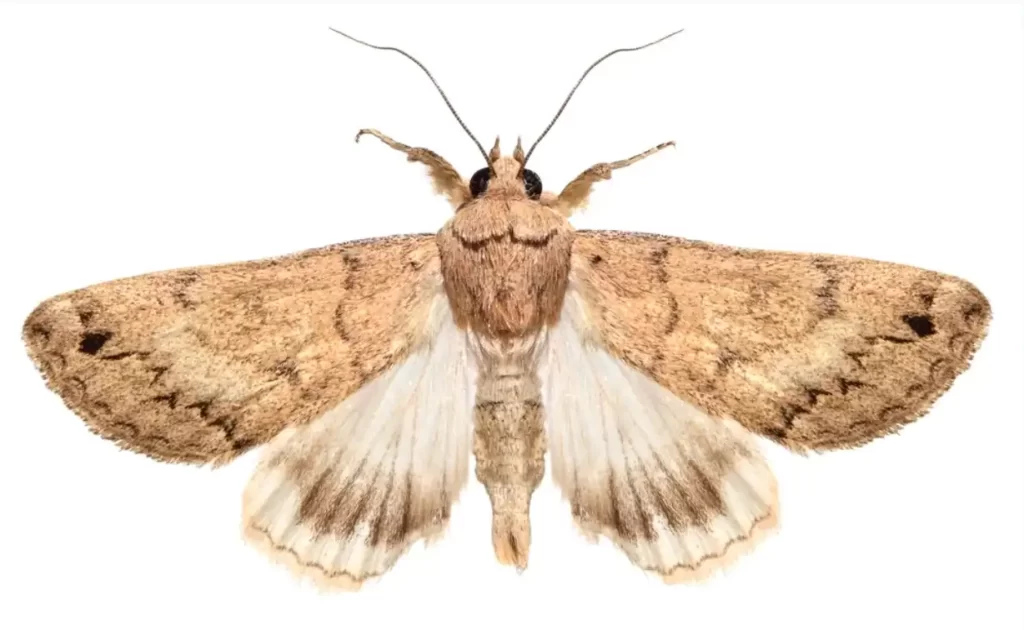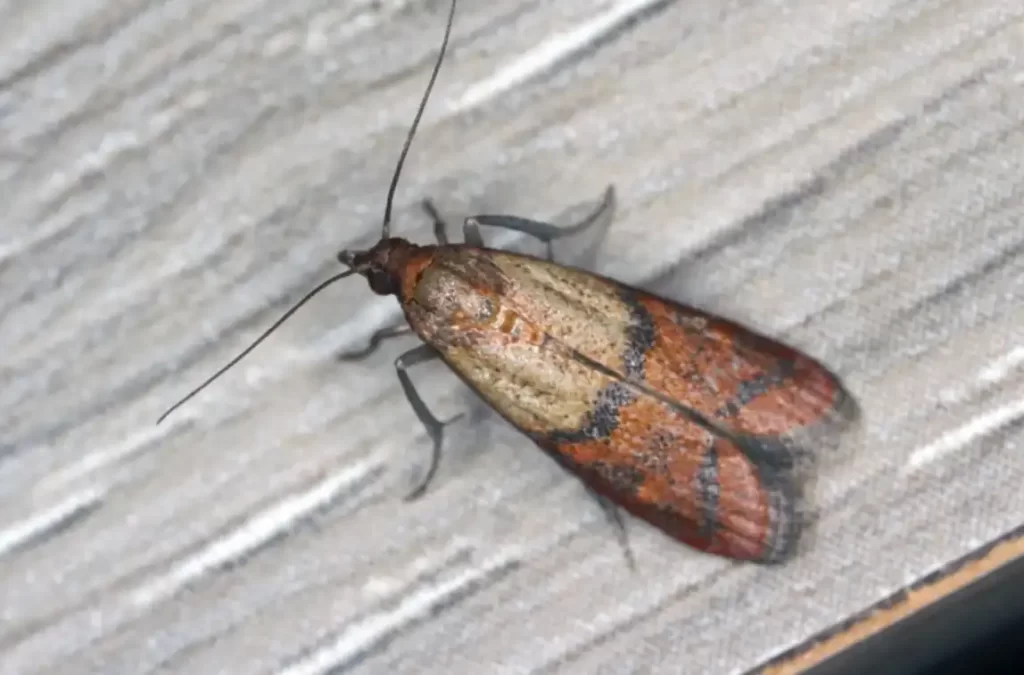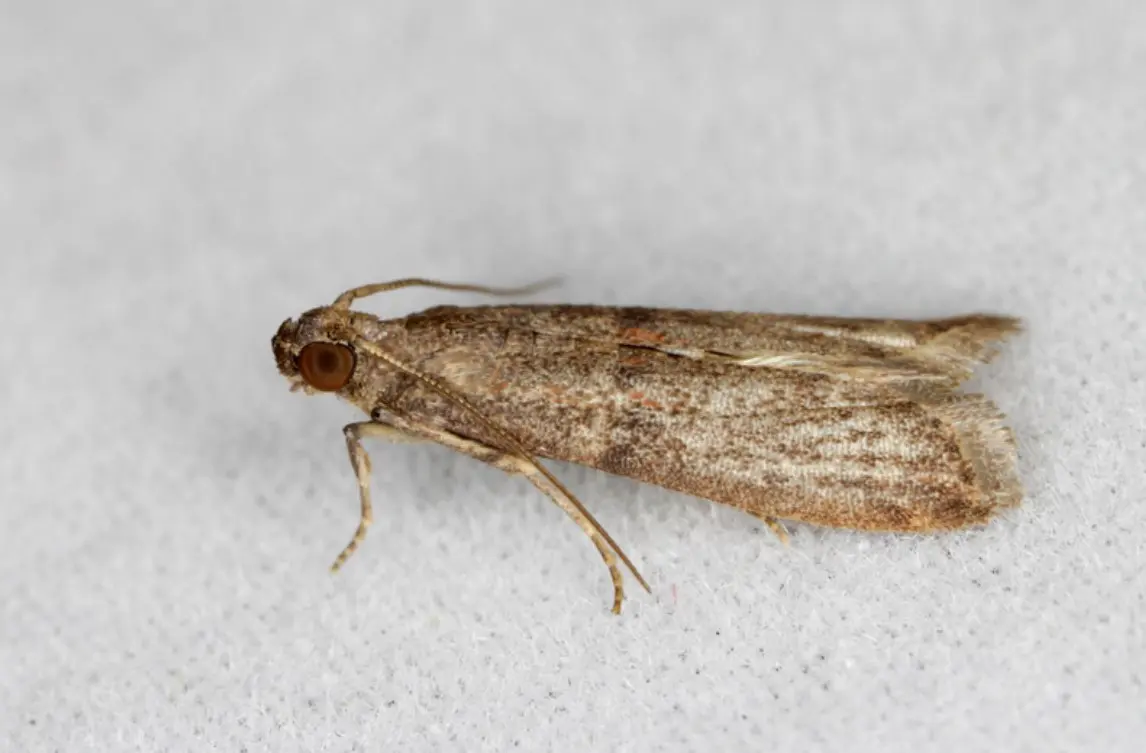Have you found moths in house and now wondering what you should know about these pests? Then this article is for you.
Moths are members of the order Lepidoptera and belong to the group of paraphyletic insects. Look wise, they are very attractive and look like butterflies. More than 160,000 different species of moths exist and they can be found all around the globe.
These species are differentiated by size, shape and colour. They keep flying from the flowers of one plant to another and play an essential role in pollination. They are also an easy source of food for birds and bats.
In this blog post, we will share 25 interesting facts about the moths in your house.
Page Contents
1. Types of Moths
There are several moth species, but in this blog, we’ll discuss the two most common types; macro moths and micromoths.
Macromoths
As it is clear by the name, in this class of moths, larger moths are categorised as giant silk moths, tiger moths, and the ever-popular Luna moth. Their size is extraordinarily large, and their appearance is bright-coloured wings.
Micromoths
This class of moths consists of small-sized moths present in residential areas and can damage household things. They are tine size insects, and their wings are drab-coloured. Clothes moths and pantry moths are an example of micromoths.
2. The Moth Life Cycle
Moths pass through four life cycle stages to reach the adult stage. The first stage starts when the female lays eggs. After egg hatching, the larva comes out and spends a specific amount of time reaching the next stage, the pupa.
After completing specific food consumption and digestion cycles, they mature enough to be called adults.
At each stage, their body size varies, and it also depends upon the type of species and the surrounding environment.
Surprisingly, moths do not eat food at the adult stage because moths do not have a mouth. On the other hand, larvae and caterpillars eat flowers and plant material to grow and stay alive.
3. A male moth can sniff off a female moth from 7 miles

Male moths’ sense of sniffing is incredible; they can sniff the smell of female moths from 7 miles. Females emit pheromones that attract male moths. This miraculous sense of moths helps them trace the location easily because they are nocturnal pests. This trait also helps researchers to locate the exact location of moths’ moment.
4. Moths don’t have noses
If you are shocked after knowing that moths also don’t have noses, then it’s the truth. Moths don’t have traditional noses like a few insect species. They have developed special organs in the form of antennas that they use to sniff the smell and detect other environmental cues. The sensitivity of these antennas is incredibly strong and can detect even the faintest scents.
5. Some moths can survive underwater
Like other insect species, a few moth species are also developing their living style according to the changes in the environment. For example, caddisfly have adapted to live in aquatic environments. They have developed specialized gills which assist them in extracting oxygen from the body and surviving underwater. These moths are a vital source of food for small sea species like fish.
6. How long do moths live?
The life span of moths can vary depending on the moth species and environmental conditions. For instance, the Luna moth can only live for a few days. On the hand, the Polyphemus moth can live up to 30 days. It is a shocking fact about moths that the adult stage of moths is the shortest stage of their life span, and the primary purpose of adult moths is to lay eggs and reproduce for the next generation.
7. What does a moth eat?

Moths eat different foods to grow, such as nectar from flowers, tree sap, and fruit. A few species of moths depend upon the pollens, while others eat rotting fruit and vegetables to stay alive. Several species also eat plants’ leaves and the bark of trees.
8. Do moths eat plants?
Generally, moths are not harmful to crops, but a few species of moths can cause serious damage, such as the corn earworm, which destroys corn fields, and the armyworm, which can cause serious destruction to a wide range of plants. Moreover, both pests can harm the fruits and grain, reducing yield and quality.
9. Moth damage to households
Apart from agriculture, moths can also be harmful to households. The clothes moth and pantry moth are common household pests that can cause some serious damage to clothes, fabric products and food.
Female moths lay eggs on the fabric and hatch them in a warm environment. Then the larvae use this fabric as a source of their food.
Moths can also build their infestation in food or grain storage areas, such as pantries and cupboards, and feed on grains, cereals, and other stored food items where the source of food for them is abundant.
10. Do moths eat clothes?
A specific type of moth is named after its direct connection with the clothes, which is clothes moths. They lay eggs on warm wool, and larvae eat wool, cashmere and fur to grow.
Most commonly, they infest carpets and upholstered furniture. If you want to keep safe your branded clothes from the attack of clothes moths, store them in airtight containers or bags.
11. Moth damage to museum collections
Moths attack things made of natural fibre and do not care if it’s the most precious artefact. They’ll damage it if it is made of any fibre. That’s why museum management uses several preventive techniques to avoid the attack of moths, such as pheromone traps, vacuum cleaning, and storage in airtight containers.
12. Moth damage to books and paper

Paper and books are also made of natural fibre. So, moths can also damage them. Moreover, they are attracted to glue used to bind the books, which can cause irreparable damage.
If you love book reading and have precious books in your collection, keep them clean and store them in airtight containers to protect them from moths.
13. Preventing and managing moth damage
There are different methods which you can combine to protect your belongings from the attack of moths.
One of the most effective ways is using pheromone traps, which are specially designed to attract and trap females before they can lay eggs. Different variations of Pheromone traps are available on Amazon.
The second method is the use of mouth balls. These are small size balls made of chemicals such as naphthalene or paradichlorobenzene. You can strategically place them in storage areas and closets where moths mostly attack.
These balls emit a very strong odour which keeps them away. But these balls are made of toxic chemicals, so use them cautiously.
14. Where to buy moth balls?
Mothballs are available at retail markets such as hardware stores, supermarkets, and online retailers. Specifically, they are available at pest control stores. You can also buy them online from eCommerce markets like Amazon. Mothballs are very effective against moths, and you can use them confidently to eliminate them.
15. Do moth balls keep roaches away?
Mothballs are used to keep harmful pests away from your households. But o moth balls keep roaches away? The answer is yes. The strong smell of mothballs is unbearable for roaches. That’s why they stay away from the spots of mothballs.
16. Do moth balls keep spiders away?
Spiders are also included in the list of pests that avoid moth balls’ smell. So, you can use mothballs to keep spiders away from your households, but it’s not a recommended remedy as this fact is not backed by science.
17. Do moth balls kill bed bugs?
Bed bugs have developed a strong immune system that can bear common remedies made of common chemicals, including mothballs. So, you cannot use mothballs to kill bed bugs.
18. Do moth balls keep rats away?
It’s claimed that moth balls can be used to repel rats, but this claim is not proven scientifically. So, use effective remedies for the prevention of rats.
19. Do moth balls keep ants away?
Moth balls are also not considered effective protection against ants because the smell of naphthalene does not repel ants. So, apply a long-term remedy against ants to keep them away.
20. Do moth balls keep bees away?
The smell of naphthalene is also ineffective against bees and cannot keep bees away.
21. Do moth balls keep fleas away?
The smell of mouth ball is not so strong to repel fleas and keep them away. So, it would be best if you are looking for a long-term solution for fleas.
22. Do moth balls keep frogs away?
Mothballs cannot be used as an effective remedy against frogs because the smell of naphthalene is not strong enough to repel the giant frogs.
23. Do moths fly only at night?
Usually, moths fly at night, but a few moth species have been seen flying during the day. In addition, some moth species are also known as crepuscular, which means they fly day and night.
24. How long can moths fly?
The ability to fly long distance also vary in different species. Moths with strong and powerful wings can fly for long distances, while species with weak and short wings can only have a few feats. A few moth species are very sensitive fliers and cannot fly during day time when the temperature is hot. They fly only during night time in cooler temperatures. Moths like the Luna moth fly very slowly and gracefully, while others like the Gypsy moth fly very fast, with erratic flight.
25. Why do adult moths not eat?
One of the most interesting facts about moths is adult moths do not have a mouth. Then how do they eat food? The truth is adult moths do not eat food, and their primary purpose is to lay eggs and reproduce. For that purpose, they don’t need to eat food. They consume enough food to store extra energy during the caterpillar stage and use it during the adult stage. This trait is not solely present in moths; several other adult insects do not have mouths.
Final Verdict
Moths are attractive insects belonging to the order Lepidoptera, including butterflies. They play an essential role in the environment and closely affect human life. They play a vital role in pollination and are a major food source for different birds and bats. If you want to protect your households and food items from moths, understand their living nature and characteristics.
They harm agriculture, households, museum collections, books and papers, clothing and fabrics and anything made of fibre. These things are a source of food for moths. And if you want to protect yourself from them, there are different remedies and preventive measures that you can combine to keep them away, such as pheromone traps, cleaning, and proper storage methods.
FAQs
What colour is a moth?
The colour of the moth varies from species to species, and also it depends upon the conditions of their surrounding environment. Some of them are bright colours, while others are drab.
Can a moth bite you?
No, moths cannot bite human skin. They only each soft fibre and plant materials which are soft.
What does it mean when a moth lands on you?
There’s no danger if a moth lands on you. The simple reason is that they may be attracted to your body scent or the light reflecting on your body.
Is it bad luck to kill a moth?
No, it’s just an illogical myth like thousand others. No scientific proof or real-life event proves killing a moth is bad luck. They are common insects and only harmful to households and things made of fibre.
When is moth season?
Moth season time varies according to the type of species and the location. Some are active the entire year, and some are active in a specific season. For example, some species are active in the spring and summer, while others are active in the fall and winter.
- Where Can I Purchase Bed Bug Bombs? - January 30, 2023
- Where Can I Buy Something to Kill Bed Bugs? - January 30, 2023
- Where Can I Buy Bed Bug Spray? - January 30, 2023
